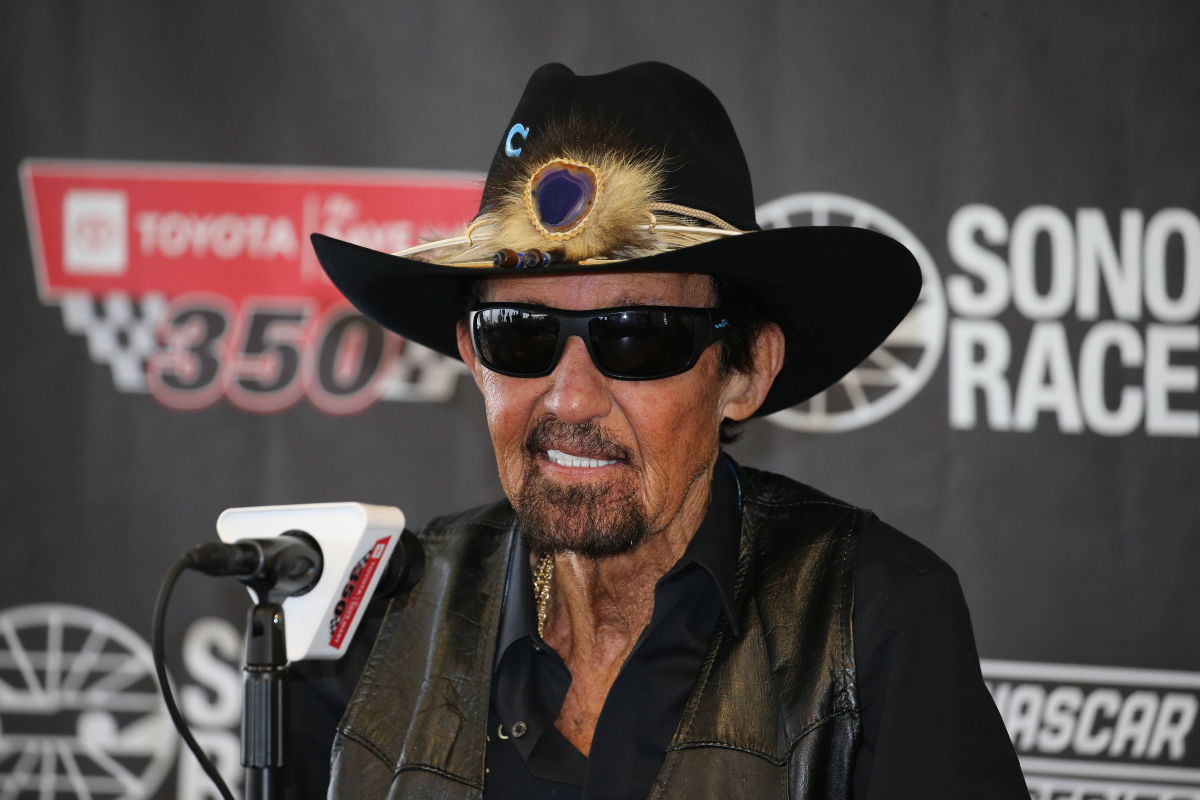
Imago
Image Credits – Imago

Imago
Image Credits – Imago
It’s flashy, unpredictable, and impossible to ignore. Street races have become something of a lightning rod in NASCAR. They bring roaring engines to downtown skylines, turn city grids into racetracks, and pull in fresh crowds who might have never stepped foot in a speedway. Take Chicago’s Grant Park circuit for example. But while fans cheered, the locals fumed. Closed roads, deafening noises, and clogged traffic turned the event into a love-hate spectacle. Part motorsport festival, part municipal headache.
Watch What’s Trending Now!
So when NASCAR recently teased a straight race in San Diego, the move sparked familiar jitters. The king, Richard Petty, voiced his echoing concerns about safety logistics and the fan base’s appetite for yet another city-based course. But in response, one top NASCAR official went on to dismiss these concerns, signaling that NASCAR is green-lighting an exciting, albeit controversial, new Avenue that some traditionalists dread.
ADVERTISEMENT
Steve Phelps says “not a no” to San Diego Street race rumor
Richard Petty, The King, didn’t hold back his comments on street courses. He aggressively argues that a street or road course win shouldn’t carry playoff weight in the sport. The seven-time Cup Series champion said, “You’re making a championship situation by winning a road course, which is not really NASCAR to begin with. From that standpoint, I think they’re going to have to jockey around and change some stuff.”
However, NASCAR commissioner Steve Phelps pushed back when speaking to CNBC in a recent interview. Fully supportive of the idea, Phelps seems really excited for this new opportunity. He goes on to say, “Listen, are we in some discussions with the folks in San Diego? Yeah, we’re in discussions with a lot of different cities. The great news about where NASCAR is, we’ve proven that we can race on the streets. We’ve proven that we can race in the stadium. You know, it’s an open campus for us now to determine where we’re going to race, and what we’re trying to do is we’re trying to open new eyes.”
The success of recent urban races bears that out. The NASCAR clash at the LA Memorial Coliseum in February 2022 featured a quarter-mile stadium track, the shortest NASCAR course in over 50 years, assembled at a cost of around $1 million. It was an experiment that drew 50,000 fans, nearly 70% of whom were attending their first NASCAR event. Similarly, the inaugural Chicago Street race saw 80% of ticket buyers attending their first NASCAR event, validating Phelps’ strategy.
ADVERTISEMENT
Phelps doesn’t shy away from the stats and bears them with pride; he goes on to validate the race courses, saying, “So the streets of Chicago, where 80% of the people who bought a ticket to that race in the first two years had never been to a NASCAR race. The LA Coliseum, same numbers, same percentage. So when we’re going to these new places, we’re opening the eyes of people who want to participate in our sport, which is the number one course in my job.”
However, street courses did not earn much praise from Dale Jr. Siding with Richard Petty, he goes on to say, “I agree with Richard Petty. NASCAR stock car racing is predominantly an oval-based series. Always has been. We have removed some ovals, we’ve removed some tracks, added some road courses. I’m fine with that because I do like the idea that our drivers need to be great at all things. If you’re going to be a champion, you now have to be as good at a road course as you are at an oval.”
ADVERTISEMENT
NASCAR was built on Oval tracks. Iconic circuits like Talladega and Darlington that turned racing into a cultural ritual drew generations of fans with roaring engines, packed grandstands, and full-throttle tradition. These tracks aren’t just venues; they are the soul of the sport. Watching NASCAR‘s recent pivot to Urban Street races and stadium events has stirred backlash. While designed to attract a new, city-based audience, many fans and other critics argue it comes at the cost of the sport’s identity, sidelining classic ovals and alienating longtime fans who see these flashy ventures as a departure from NASCAR’s Blue-collar roots.
But Phelps remains non-committal on San Diego, yet optimistic, saying, “It’s not a yes, but it’s not a no.”
When NASCAR jumped into streaming with Prime Video, many expected a stumble similar to what the NFL saw with Thursday Night Football, but instead, NASCAR flooded it and raced past expectations. The action wasn’t limited to the track either. The pre-race and post-race coverage felt like a reboot done right. Carl Edwards looked born for the booth, Corey LaJoie added a sharp, modern flair, and Dale Earnhardt Jr. proved once again why he’s the voice fans trust. It wasn’t just a broadcast; it was a full-throttle production.
ADVERTISEMENT
Top Stories
Jimmie Johnson & Co. Robbed of Millions as Court Exposes Disastrous Fallout of Jim France’s ‘No Bueno’ Decision
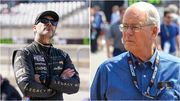
Jeff Gordon Duped Into False Hope as NASCAR’s Blatant Lie Exposes Jim France as Culprit No. 1
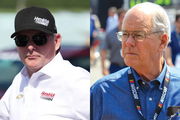
Displeased Judge Bell Explodes on NASCAR Lawyers Caught Red-Handed In Dirty Courtroom Tactics
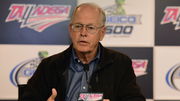
Why Did Chris Gabehart Leave Denny Hamlin & JGR? What His Exit Means to Joe Gibbs & Spire Motorsports?

NASCAR Trapped in $61M Financial Nightmare as Steve O’Donnell Admits Stripping Team Power to Force Mexico Agenda
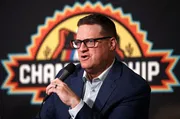
Steve Phelps applauds Amazon Prime NASCAR stint
The Great American Getaway 400 last week drew an average of 1.87 million viewers via prime, about a 22% drop from the 2.4 million who tuned in on the USA network in 2024. Yet, that figure came amid a rain delay and breaking geopolitical news, making the results more impressive. Across the five prime races this season, NASCAR averaged 2.16 million viewers, down 17.6% from the 2.62 million linear average last year, but with an audience that’s skewed significantly younger and more affluent households. (median age 56.1 versus 62.8 and median household income 86K dollars versus 77K dollars). NASCAR’s broadcast team brought extra momentum. The pre- and post-race coverage on Prime Video was stellar, retaining 43% of viewers into the post-race show, which drew about 931,000 viewers.
Even NASCAR commissioner Steve Phelps couldn’t hold back his praise. He admitted, “Yeah, there was a fear. But for us, we thought it was really important to test a streamer, right? So there were lots of people who doubted that the numbers would be as good as they are. I mean, there’s a pundit who thought the numbers, and I won’t say who it is, because it’s a current partner, their research person, thought Amazon Prime would do 1.2 million average viewers on for the Coke 600 … 2.7 [million]. So he missed by just a smidge.”
ADVERTISEMENT
With a strong production, fresh voices, and surprisingly high numbers, the NASCAR streaming experiment wasn’t just a win; it was a blueprint. What started as a risk has now positioned the sport as one of the few leagues that knows how to blend tradition with tech and bring fans along for the ride.
ADVERTISEMENT
ADVERTISEMENT
ADVERTISEMENT

